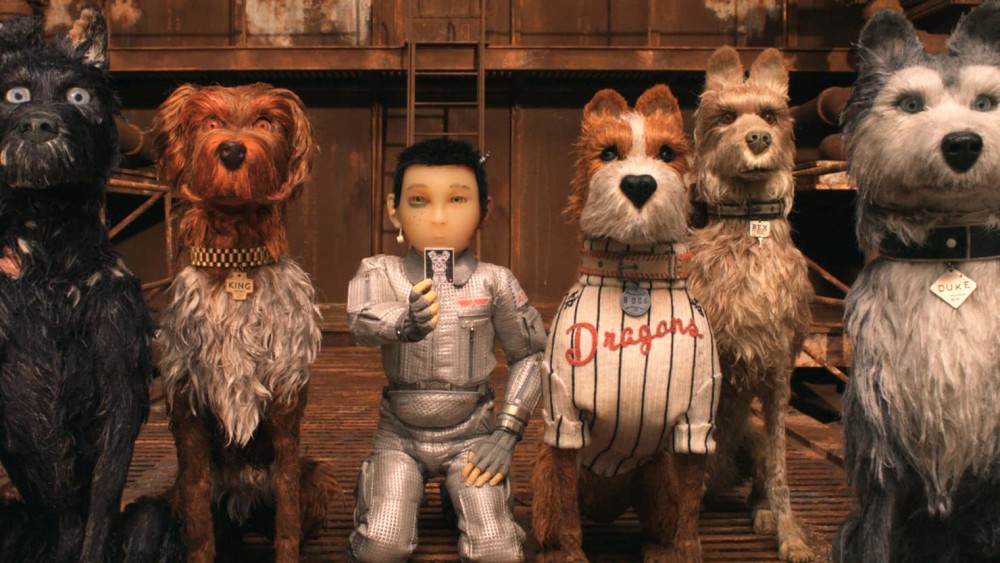When Chief, a growling stray banished to Trash Island in Wes Anderson’s “Isle of Dogs,” asks why he should help a young boy searching for his dog, a well-trained show dog named Nutmeg tells him: “because he’s a 12-year-old boy. Dogs love those.”
Audiences love dogs too, and director Wes Anderson is keenly aware of this. Combining the famed director with a pack of animated puppies seems like a simply perfect collaboration. Maybe it is, but “Isle of Dogs” doesn’t quite play out with such perfection.
Twenty years in the future, Mayor Kobayashi of Megasaki City, a fictional metropolis in Japan, banishes all dogs to the uninhabitable Trash Island because of an outbreak of dog flu. Determined to find his exiled dog Spots, the mayor’s orphaned ward, Atari, flies to Trash Island alone and comes across a ragtag group of dogs. On its surface, “Isle of Dogs” seems to be a story about a boy traveling to find his lost dog, but Anderson digs much deeper into themes of friendship, corruption and justice. “Isle of Dogs” is not a simple family movie.
The core pack of dogs immediately feels familiar — voiced by Anderson regulars Bob Balaban, Edward Norton, Bill Murray and Jeff Goldblum, each dog has the quirks and overdrawn specificity of most of the director’s characters. Anderson newcomer Bryan Cranston plays Chief, a stray that resists any connection with humans. His performance as Chief, who is begrudgingly forced to help Atari on his journey to find Spots, brings out the human-like stubbornness and isolation of the stray’s life.
The animation in the film is a technical marvel and its level of detail is incredible, from the dogs’ fur fluttering in the wind to the tiny tears that sometimes stream from Atari’s eyes. As with many of Anderson’s films, violence is integral to “Isle of Dogs,” and Anderson creates highly-detailed cotton ball clouds of dust, with dog tails and snouts sticking out during these fights.
“Isle of Dogs” is also undeniably adorable, as a stop motion film about dogs should be. The dogs immediately call Atari the endearing nickname “The Little Pilot.” These charming moments are balanced well by the underlying theme of loneliness — Chief and Atari are both strays, and it’s hard to forget this as the pair wanders through the island’s litter-covered landscape.
All of this sweetness is easy to discuss while ignoring the Japanese setting that Anderson is attempting to honor. Working with Japanese actor Kunichi Nomura, Jason Schwartzman and Roman Coppola, Anderson has stated that “Isle of Dogs” is an homage to Japanese filmmakers Akira Kurosawa and Hayao Miyazaki.
But, Anderson’s manipulation of language isolates the viewer from the culture he is trying to honor. An intertitle at the beginning of the film explains that all characters speak in their native language, occasionally translated by an onscreen interpreter but rarely subtitled. The dogs’ barks, however, are played in English. Eleven-year-old Koyu Rankin voices Atari, and though his performance is sweet and sophisticated, an English-speaking viewer never truly gets to access his work. Other Japanese characters, like the cruel Mayor Kobayashi, are frequently spoken over by an interpreter played by Frances McDormand.
This tone-deaf structuring of the language of the film favors dogs over humans, and at times, this decision is fun and fresh. The camera is similarly placed at the dogs’ eye level, so, in many ways, “Isle of Dogs” is trying to see the world through a canine perspective. But, knowing the filmmaker’s intention to honor Japanese cinema muddles this attempt — the end result is as charming, messy and confusing as the apocalyptic landscape of Trash Island.
Grade: B








